[[this page is very unfinished]]
- run shadow of revan on republic side for more hints
- technically need to run the ilum storyline but i dont want to
- maybe consular on hoth?
How to enter the Endar Spire?
- Imperial: soo you’re main story with the bounty hunter whan you are playing the game with torians father and then one more pub toon but forgot wich one that makes you go in
- Republic: part of the planetary storyline, Last Battle of the Endar Spire given by Captain Childress
How to learn about the Outcasts and the Promise Land?
- Republic-side only: Pick up from a quest giver in Morne outpost
How to learn more Star forge technology on Nar Shaddaa?
- Imperial-side only, Blackout Quest, you speak General Kolvin, located in the Industrial Sector in the Ops area to the north near the taxi, no other quests required even though its technically part of the Bonus Series
How do I see the reference to the KOTOR Companions on Corellia?
- Bonus quest called Restore The Statues, which is gotten with the planetary quest called Morale Boost on Corellia, Lieutenant Rufar 922, -3389, Axial Park top right – in the Republic Safe House, in a room in the top right of the map
Star Forge
The foundry’s specifications match those of three other space stations known by history. Each of these legendary stations could manufacture technology on a massive scale. One xenoformed planets, another built fleets of ships. The Foundry creates endless armies of droids, commanded by the Foundry’s Jedi Master. – Darth Malgus, The Foundry Flashpoint
Landing Party

Plageuius
The low-gravity planet was known then as Buoyant, its bewildering jumble of flora and fauna the result of an experiment by a long-forgotten species that had tweaked the atmosphere, set the world spinning faster than nature had intended, and encouraged the growth of lush forests and expansive grasslands. The still-functioning machines of the ancients dotted the landscape, and millennia later the animals they had imported were thriving. Nothing moved slowly or ponderously on rapidly spinning Buoyant, even day and night, or the storms that scrubbed the atmosphere with violent regularity.
“But Ashla is a perversion,” he went on, “for the dark has always preceded the light. The original idea was to capture the power of the Force and make it subservient to the will of sentient life. The ancients—the Celestials, the Rakata—didn’t pronounce judgment on their works. They moved planets, organized star systems, conjured dark side devices like the Star Forge as they saw fit. If millions died in the process, so be it. The lives of most beings are of small consequence. The Jedi have failed to understand this. They are so busy saving lives and striving to keep the powers of the Force in balance that they have lost sight of the fact that sentient life is meant to evolve, not simply languish in contented stasis.”
[…] The Sith are not placid stars but singularities. Rather than burn with muted purpose, we warp space and time to twist the galaxy to our own design.Darth Bane`
Contents
What happened to the Star Forge after Knights of the Old Republic?
While on my quest to discover what had happened to Revan after Knights of the Old Republic, I stumbled down a new path of inquiry while playing the missions related to the most well known figure in Old Republic history. If you’re playing through all the Revan-related quests in Star Wars: The Old Republic, you’d start by doing the Revanite quest on Dromund Kaas that shows you a Sith cult that worships Revan, then a pair of Flashpoints republic side where you go and rescue Revan, and the on Imperial side you would go play a pair of Flashpoints where you wind up fighting Revan after finding out he has a diabolical plan to annihilate a majority of the Empire and all its citizens. While this revelation is shocking enough, a small, almost inconsequential line in the lead-up quest to go fight Revan sent me down a spiral of lore discovery related to the Star Forge and its technology.
The flashpoint quest that you fight Revan in is called The Foundry, which is also the name of the space station you head to investigate what is going on. Before you depart, Darth Malgus, a member of the Dark Council, explains that the Foundry’s specifications match those of three other space stations known by history. Each of these legendary stations could manufacture technology on a massive scale. One xenoformed planets, another built fleets of ships. The Foundry creates endless armies of droids, and is commanded by the Foundry’s Jedi Master, who you would later learn is Revan himself.
Before this point, I had mostly known of the Star Forge technology only though the Knights of the Old Republic, where the main focus is on finding and stopping the original Star Forge, with little thought given to the other potential terrors lurking in the recesses of space. However this quick line about there being multiple Star Forges ignited my interest in finding out just what happened to the original Star Forge, and if there was any other information lurking in Star Wars lore that might give hints about the additional Star Forges mentioned by Darth Malgus. These “legendary space stations” don’t have a specific name or designation, so I wound up having to settle on calling them Star Forges, plural.
How many Star Forges were there?
My first question was… well, how many Star Forges were there?
Darth Malgus’s line says that, “the Foundry’s specifications match those of three other space stations”. Due to there being so little information available about the Star Forges, it’s almost impossible to confirm exactly what he means. My first interpretation is that there was the Foundry, and then three others, for a total of four Star Forges total. So you’d have The Foundry being one, the original flavor Star Forge being number two, a Xenoforming planets Star forge being number three, and a big fat mystery for number four. On closer inspection, although I think the original interpretation is grammatically correct, I believe the interpretation that there are three total is what the author was aiming to explain – with the ‘other’ in the sentence referring to the group of schematics that can be compared to what the strike team knows about The Foundry. This would mean there are three total Star Forges – The Foundry, the original Star Forge, and finally the Star Forge that could xenoform planets.
I wondered if there had ever been any other references to there being multiple Star Forges, and found out that there was – but it would be only located in a written lore entry in the game that is actually broken and can not be properly earned by okayers trying to hunt it down, though it may have been available in the past. This codex entry, aptly titled, ‘The Foundry, says something very similar:
The Foundry appears to be at least twenty to thirty thousand years old, built by a long-forgotten alien species. Its specifications resemble those of three other space stations discovered by the Empire, each possessing vast power–one, the “Star Forge,” constructed fleets of warships, while another was capable of xenoforming entire planets. The extent of the Foundry’s production capabilities are as yet unknown, but if history is any guide, the station could change the galaxy.
This codex entry’s wording muddles the waters even more however, as the entry explains very specifically that the Star Forge resembles those of three other space stations discovered by the Empire, for a total of four. But since this codex is not technically in the game anymore, I do not know if it can be considered a proper part of the informational timeline, just like cut content in other video games is not always considered a part of the expanded universe lore. However I have had another player show me their older codex entries list where that had successfully gained the Foundry entry, so it must have been available at some point in time. It’s most likely that the codex entry was accidentally made unavailable due to an error or mistake when updating the quest over the years, causing it not to trigger in player’s codex entries, but there is a small chance it was removed due to the potentially conflicting information.
So, how many Star Forges were there?
At the moment, I think it’s safe to say that there have been four total discovered by the Empire, one being the destroyed Star Forge, one being the Foundry, one being the xenoforming planet and the last one being very mysterious. It’s unfortunate, but I doubt we will ever get some pure clarification about exactly how many Star Forges there were intended to be, or get any information about the third xenoforming planets Star Forge. Both sources are quite clear though when it comes to their wording – there could be more Star Forges out there unknown to either history or not discovered by the Empire yet. So if a Star Wars writer, or an intrepid fanfiction writer, wanted to write about additional Star Forges, they would not be out of line. The most important theme that the Star Forges share seem to be the ability to crate one thing and turn it into something else.
What did the Star Forges do?
The written codex entry for the Foundry is also quite clear about how the Star Forges work.
The Imperial Reclamation Service believes the Foundry now uses a network of tractor beams to capture and break apart nearby asteroids, providing raw materials for its endless mass production.
This act of consuming asteroids and producing ships or droids is also visually seen in the single-player game Knights of the Old Republic, when the player finally discovers the Star forge itself at the end of the game. The Star Forge is pretty clear – asteroids go in, ships come out. The Foundry is also pretty simple, asteroids go in, droids come out. The original Star Forge could also produce droids. Technically, depending on how you interpret it, the Star Forge could even produce things like armor or customized Jedi Robes. In the Knights of the Old Republic game, you could actually slice into the Star Forge computers, and one of the interesting options was the ability to generate a set of special robes at a heavy material cost. If you chose this option, the computer would briefly flash a message saying “MATTER CREATION PROCESSORS ENGAGED” and that it was generating robes for you, which would suddenly appear in a nearby cell previously protected by a force field.

Due to the ability to choose multiple different options, it’s fairly safe to assume that the Star Forge actually generates the robes out of thin air – or rather, it’s able to turn asteroids into even complex objects like armor and robes, and is able to create things beyond the scope of just droids and ships.
When the player is first learning about the Star Forge in Knights of the Old Republic, neither they, nor the Jedi, know anything about the Star Forge, but in a monument on Dantooine they are met by a droid who serves the Rakata who originally built the Star forge. The droid explains that the Star Forge is a machine of invincible might, a tool of unstoppable conquest. Although the Star Forge may be able to create more complex objects like light-sided Jedi Robes, its original purpose was clearly to be a tool of war.

So while Malgus may have described the space stations as the one that makes an endless armies of droids, and one that makes fleets of ships, the Star Forges clearly had the capability to make more than just that.
Where things gets really interesting is the third space station he describes, which has the ability to xenoform planets. This is one of the descriptions that intrigued me the most – two Star Forges were described as being massive factories, while the third… xenoforms planets? Part of the confusion comes form the word xenoform – it’s not a word that exists in the English dictionary, nor is it a completely “made up” word that has a specific meaning only in the Star Wars universe, like the words Sith or Jedi do. The closest word that exists in both real life in and the Star Wars universe is terraforming – though this word many have a drastically different meaning for both. In really life, terraform is broken up into two parts – terra, which is the latin name for Earth, and form, which means to shape. In modern English and most sci-fi literature, terraforming means to reshape another planet and make it support human life, often drastically changing the atmosphere and landscape so that it has the basic components that allow humans to breathe, drink water and grow food comfortably. In Star Wars though, the word terraform gets trickier – as there are many forms of sentient life that don’t need the same things humans do – for example, in Knights of the Old Republlic II, you can visit a bar that caters to aliens whose normal troposphere is filled with gas that would be deadly to humans.
So what does xenoform mean then?
It’s very similar to the word terraform, but the first part is different. Xeno, in short, means foreign. In the English language, its often used to refer to people from other countries or cultures, for example xenophobia is a fear and hatred of strangers or foreigners from other countries. In Sci-fi, the word Xeno has fully adapted to mean alien, for example in a story where humans are just meeting aliens for the first time, anything from their culture might be referred to as xeno-something-or-other, for example a xenobiologist in that story could be someone who is studying the newly-encountered aliens’ biology.
The word Xeno in Star Wars however is where things get weird – while there are plenty of humans in the Star Wars universe, the galaxy is wide and full of all kinds of aliens, and its unlikely someone would label themselves specifically as just a xenobiologist, as there are 20 million sentient species known to the galaxy, and a scientist who focused on the knowledge of a specific species would probably go by a different, more specific name.
On the opposite side of things, humans can also be considered ‘xeno’ to other species and planetary cultures. The Gree, a mysterious race of aliens, visit the planet of Ilum in Star Wars: The Old Republic and have species of all kinds participate in their experimentation. One of the bosses players can fight in the game is named Xenoanalyst – a droid that assesses their fighting skills, tactics and environmental awareness, so the Gree can learn about other alien cultures, including humans.
Despite that awkwardness, the word Xeno is still often used as a prefix all over the Star Wars universe, though it is often used to describe “ancient” alien technology – strange and wondrous things that are so different and foreign that no one in the current galaxy’s time knows much about that. Sometimes you’ll see some terms like Xenolinguist or Xenobotany pop up, but it’s rare, and usually only refers to the person studying a specific alien language or specific planet’s botany. Xenoarchaeology, however, is one of those Star Wars words which takes on a new meaning – it’s the study of vanished alien cultures through the scientific analysis of the artifacts left behind.
At first, while discussing this with other fans, the conclusion was that xenoforming must mean something like terraforming – except with the word earth- being replaced with alien. So that might mean the act of terraforming a planet and reshaping it to be suitable for life, but instead of shaping it for human life, to shape it to suit alien life. For example, maybe the Selkath, who live underwater, would ‘xenoform’ a planet to cause its oceans to cover the entire planet, making it more suitable for their aquatic environment. This seems like a pretty good conclusion at first – the word terraform pretty clearly has the word earth in it, and there are plenty of weird species out there who wouldn’t want to shape a planet to meet earth-like standards.
Unfortunately, even when non-human species go to change a planet, it’s still called terraforming in Star Wars lingo. The Rakata are one of the biggest culprits of changing up planets, and every one of their monumental efforts is described as terraforming, even though they are very far from being human-like.


In Star Wars: The Old Republic, players sent to help on the planet of Oricon are instructed to destroy the Dread Masters’ Terraforming Devices, which were used to burrow into the earth and instill fear into the very nightmare-fueled land including adding chemicals to the air and generating electromagnetic radiation – the word terraform in this case very clearly does not mean to make the planet more habitable for humans or to make it more earth-like. Between these multiple uses of the word in Star Wars lore, it’s safe to assume that the word terraform means simply to make changes to a planet, and that there’s no real separate word like ‘xenoform’ for what type of species you’re changing it for, or even what your goal is.
That brings us back to the question, what does xenoform mean?
To form can have another meaning – to give shape, or to take shape. To create something new out of something else entirely. We do know that the original Star Forge and the Foundry could take matter like asteroids, and turn it into something entirely new like ships and droids. Why could the third Star Forge not intake matter, and produce entirely new, foreign planets?
After this research, I believe this is the most logical conclusion – that the third Star forge can create entire new planets – and it’s also incredibly introxicating in terms of storytelling for future games or novels.
Not only would this third Star Forge be hotly contested for its ability to create machines of war for the Empire like the original three space stations, but almost every culture and faction in the galaxy would have great use for a machine that could create a custom planet. Many of the struggles of the Old Republic include battles for resources, from fuel to food, and an engine that could turn asteroids or dead worlds into thriving ones would be an incredible boon. In Knights of the Old Republic II, the player visits the planet of Taris after its destruction, where the Republic has taken up the difficult task of trying to rehabitat the planet that had been bombarded by the Sith. The rebuilding efforts were almost impossible – not only was the Republic short on resources when it came to credits and even things like flora and fauna, but they were also fighting against the growing population of deadly infectious Rakghouls. Even 300 years later in Star Wars: The Old Republic, the recolonization efforts on Taris have very little effect. Instead of taking on the doomed task of rehabilitating the planet, the remaining Tarisians could have instead been fully evacuated, and the remains of the planet and the Rakghouls fed into the third Star Forge, with a new, sparkling planet taking its place, free from the destroyed city scapes, and more importantly, from the Rakghoul infestation.
Even with noble intentions, the third Star Forge, if found, could have disastrous results for its owners, as it did for the Infinite Empire. In the Rise of the Infinite Empire codex entry, we learn a little more about what happened to the Rakata.
The Rakata’s slaves were put to work building monuments to the Infinite Empire’s glory. Among the Infinite Empire’s achievements was the Star Forge, a space station capable of producing endless droids and starships. However, the Star Forge was fueled by the dark side of the Force. Using it only hastened the Rakata’s fall.
This demise is further explored in a Star Wars novella about the Celestials and the Rakata.
As with all the weapons of the Architects, the Star Forge proved a thing of great evil. A vast orbital shipyard that created machines of war, it drew energy not only from the local sun but the midichlorians of the Rakata, an idea first put to use by the Varlian Empire. The Star Forge proved deeply corrupting to them, and not long after its completion, the Rakata were overtaken by psychosis as its vile engines drained hungrily from them. In the chaos that ensued, their slaves succeeded in revolting. A mysterious plague soon after followed, ending the Infinite Empire and Rakatan civilization for good.
With almost no more info to be found about the third Star Forge, my mind went back to the two that we had uncovered – starting with the Foundry, the space station players destroy in Star Wars: The Old Republic. My biggest question was… what exactly had happened to it?
What happened to the Foundry?
Buckle up because we’re not even close to finished discussing this conspiracy theory.
In Star Wars: The Old Republic, players are sent to a space station called The Foundry, where they are forced to confront a 300-year-old Revan and stop him from completing his dastardly plan of destroying a majority of the Empire’s population. His methods were simple – take control of The Foundry which could produce an infinite army of droids, and re-program the droids to seek out and destroy everyone in the galaxy with Sith heritage. Your character as the hero of the Empire stops him, and at the very end of the mission you’re left standing on the now-captured Foundry, which seems to still be fully operational. After you leave, your point of contact confirms that the Foundry needs some tidying up but that it is salvageable, and Darth Malgus boasts about the new army and a victory for the ages.

The idea of the Empire having control of an endless army of droids is a fairly terrifying thought, as although the Republic and the Empire are in a constant battle for dominance, neither of them have had such a powerful weapon in possession anytime in recent history.
Before this point, the knowledge of legendary space stations like the Foundry was available, but its exact location was not known. Its location was kept secret by Revan for 300 years, and was only revealed when Revan used his freedom to return to the Foundry, along with the not-very-secretive Republic armada.



At this point in the story though, the Empire now has possession of an ancient space station of untold power… but it won’t stay in the hands of the Empire for long.
What happened to the Foundry?
[[PLAY THE ILUM STORYLINE]]As the player is briefed for the mission, dubbed The False Emperor in-game, and incredible amount of lore about the Foundry’s fate is dumped on them.
A codex entry gives us a hint,
The Schism Collective’s skills drew the attention of Darth Malgus, who patiently earned its members’ trust with gifts of technology and test subjects. The collective’s technologists have since performed many important services for Malgus, such as incorporating the technology of the ancient Foundry into the Emperor’s captured space station. They have also augmented the weaponry used by Malgus’s forces with Rakata devices and perfected the production of his stealth fleet. Malgus holds up the Schism Collective as an example of alien ingenuity that the old Empire was foolish to reject.
One of my big questions was that with the knowledge of Darth Malgus using the Rakatan technology from the foundry to crate his stealth armada, just how much of the Foundry had he salvaged? Was the Foundry itself still fully functional, but they had copied the technology inside and replicated it on Malgus’s new space station? Or had they fully gutted it, simply transporting the most important parts from the Foundry, leaving it an empty shell?
The answer was made fairly clear as I played through the False Emperor mission. While in the mission, you can actually see the remains of the Rakata technology while your strike team makes its way through the space station. They appear as giant machines made of cracked stone, and are carefully placed inside of modern technology made of metal and plastisteel. The Rakata technology is very clearly visible. You also get to immediately decide the fate of the most important Rakata technology during the mission, where you’ll have the choice to threaten a member of the Schism Collective, who then overloads the Foundry’s salvaged generators, creating catastrophic damage to nearby hangars. I believe it’s safe to assume that if you choose this option, the generators are fully destroyed, and the most important part of the infinite engine that was once on the Foundry is completely destroyed.


Even if you do not choose this option, when confronting Darth Malgus, he will initiate the self destruct sequence, which only he can deactivate.


One way or another, in your character’s duel with Darth Malgus, he will die and the space station’s reactors will overload, with a meltdown imminent as you flee the station.
With the Foundry generators being so incredibly large and complex, I believe it is safe to assume that very little survived the blast, and that the remains of the False Emperor’s space station retrofitted with the Foundry’s generators would not be easily salvageable and easily retrofitted into a new space station.
However, whether you are playing on a Republic or Imperial character, both factions say they will scour the wreckage and salvage what they can from the Emperor’s destroyed station.

With Imperial Reclamation salvaging what they can from The Foundry, it shouldn’t be too surprising that the same was done in the wreckage of the original Star Forge, and the salvage of these legendary space stations comes heavily into play in the Shadow of Revan expansion, where players uncover a mysterious plot where a high ranking official in each the Republic and the Empire seem to be betraying their own faction, in an effort to gather knowledge and technology for a third faction.

These two nefarious plotters raid both the Jedi Temple on Tython and the Sith Temple on Korriban to gain knowledge about Rakata technology, presumably to find a way they can take advantage of what was found in the wreckage of the Star Forge. Perhaps the wreckage of The Foundry was too far damaged… or perhaps the Star forge was just a more recognizable name for players who were fans of the previous game.
But what did they make out of the salvaged Star Forge pieces? The answer is a bit less exciting than an infinite legion of ships or droids, but is still quite intriguing: on the planet of Manaan, your character can discover that they are engineering prototype Rakata-tech warriors, starting their experiments on Selkaths native to the planet. The warriors are describe as self-repairing, and virtually immortal, an army of cyborgs. It’s unclear exactly how strong these enhanced warriors are though, as they do not receive much screen time, and the player character can defeat them as easily as any other enemy.






[[repubic from zahk?]]

Even


Mother Machine?
And yes Mother Machine is the final quest in the Inquisitor story there.


No. The World Razer is an ancient being or creature that the Rakata imprisoned inside the planet of Belsavis – it is not a piece of technology built by the Rakata like the Star Forges.
The reason we thought it might be related to the Star Forge is that it’s described as something that burns planets, causes hundreds of starts with wither and collapse, and most importantly, that the World Razer consumes all, and is even described as having consumed a thousand worlds.

The Rakata trapped the World Razer away in a prison called The Burning Way, and during the Belsavis planetary quest line, your Republic character is sent to stop the Esh-Ka from freeing it, who were originally enslaved by the Rakata to build The Burning Way.

The Star Forges also consume matter – for example turning asteroids into ships – but the Star Forges seem to only do this by request to turn matter from one object into a new one, where the world razer seems to simply be a hungry and terrible entity that consumes without creating.
The World Razer Codex: Almost nothing is known of the ancient being known as the World Razer. No one has seen or spoken to the creature for thousands of years; the Rakata’s cryptic warnings suggest the World Razer is Belsavis’s oldest prisoner, and that the prison was first constructed to hold the terrible entity whose hunger consumed a thousand worlds. According to the Rakata inscriptions in the Tomb, it took the combined might of the Infinite Empire to subdue the World Razer, and an entire planet to contain its fury. If such a creature were ever released, its rage might very well shatter the galaxy.
One mystery that remains is the question of what the World Razer actually is. We know it’s not just an AI due to it being described as a creature or entity, but there are precious few answers in game or in other lore.
Fun fact though, the world razer as well as many other terrible entities are explored in a short novel called Supernatural Encounters: The Trial and Transformation of Arhul Hextrophon by Joseph Bongiorno. This novella was originally written for the now-defunct Official Star Wars Fan Club website, but copies of the novella still exist online. While the novel itself is focused on going over the intense history of the Celestials and the Infinite Empire and their conquests and creations, you may find it hard reading, so let me grab just one passage that talks about one of the offspring of a being created by the Celestials. In the novella, it’s explained that the celestials were allowed to create all manner of things including dimensions and creatures, but one of them, named Wutzek, sought to fashion beings who would not falter, and who could use their power to guide the coming inhabitants of the new dimension he and some other Celestials were creating. However, he did this in secret, and this secret caused discordant feelings of egotism, remoteness, impatience, and apathy, which bled into his new creations. The first spirit he created was named Tilotny, and she was shaped in the image of the most beautiful of sapient forms. She eventually had offspring, one of which was named Typhojem, but the offspring was a hideous thing the galaxy had never before seen, a tentacled grotesquery with a pulpy head, like a monstrous squid from the occluded deeps, with membranous wings that drew forth from the dripping, bloated sack that was its body. Tilotny, lover of beauty, despised her new offspring, and the ugly child eventually grew into a creature named the Father of Shadows.
Perhaps amongst the most terrifying entities Typhojem called forth were the Shadow-Beings, demoniac pedumbrations who passed beyond the dimensional borders. They would not serve Typhojem, nor any in dark Illathurion, but only the true Father of Shadows, whose voice they hear and obey in their umber, cryptic minds. Besides these, other grotesques and abominations crept into the universe at this time, the horrid Xanxathotep who presides at the Temple of Shadows in the frozen reaches of dim Yumar; the three-headed Taknaath, giant guardians of the vast and dismal chambers in the Citadel of Cykranor; the faceless and slippery Athla’giroth, known as the Eater of Stars and Destroyer of Worlds, now imprisoned on frozen Plawal; the ghastly and esurient Void Horror, rolling and flapping alone in the black aether; fearsome Lotek’k, the Terror from Beyond, who served naught but Typhojem, and others too foul to enumerate.
So not only did we get to learn that the World Razer was built by the Celestials, but we also get to learn that it goes by the name of Athla’giroth, and that the World Razer came from the same place that Lotek’k, the Terror from Beyond did which we see in the operation in Star Wars: The Old Republic. There’s some additional interesting stuff about Terror from Beyond in this novella, which explains where it got its name.
The hidden Seolians never saw the surface of their world again, and it is for this reason that Lotek’k is called the Terror from Beyond, for the fear he inspired caused the Seoulians to choose a life underground, where their descendants yet remain, avoiding all outsiders.
In this novella, this part of the Star Wars timeline was a terrifying time where nameless daemonaic things alighted on worlds of their choosing, declaring themselves as emperors and their masters as gods. Those who submitted became slaves; those who would not, faced slaughter. Eventually, these terrible creations were stopped by their creator, but many of the terrifying entities that were summoned simply hid in the deep recesses of space – in our case, that would include the World Razer and the Terror from Beyond.
At the end of the quest on Belsavis, your character gets a chance to free the World Razer, or make sure it remains trapped in its prison in The Burning Way, promising you that you’ll receive the technology of the Rakata in return for freeing it, and if you don’t your children’s children would feel its wrath. It also assures you that you don’t need to fear it, as it will be many cycles before it can crack the planet open and escape, and you’ll but dust and bones by then.

After reading about the abominations summoned by Typhojem, I’m really starting to regret letting the World Razer free just so I could complete my research about the Star Forge – though the blue level 5 plasmatorch companion gift I got on Ilum from the World Razer’s secret cache was definitely worth the price of damning the entire multiverse in a couple hundred years from now.
m1
Jonas Balkar – Those scientists have figured out how to supercharge the war droid’s power core with some kind of rare alien tech. If you don’t stop them, M1-4X will become invincible.
(later)
Player – Will your shields and weapons be as powerful as they were when we fought?
M1-4X – Unfortunately, no–your skillful assault reduced my power core’s charge back to its baseline. But this is only a temporary situation.
M1-4X – Over time, my power core will gradually recharge, increasing my effectiveness until I can once again slay the Republic’s depraved enemies with impunity.




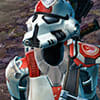 Questions or comments? Feel free to send me a message on Twitter
Questions or comments? Feel free to send me a message on Twitter 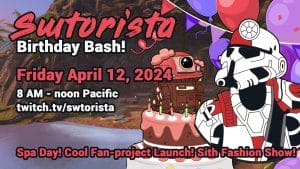 Swtorista Birthday Bash 2024 & Fan Project Launch Celebration! Friday April 12, 2024 at 8 AM – 12 noon Pacific
Swtorista Birthday Bash 2024 & Fan Project Launch Celebration! Friday April 12, 2024 at 8 AM – 12 noon Pacific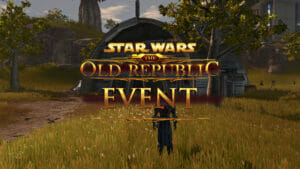 April 2024 Events! Pirate Incursion April 2nd – 9th, Bounty Contracts 16th – 23rd
April 2024 Events! Pirate Incursion April 2nd – 9th, Bounty Contracts 16th – 23rd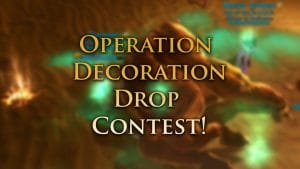 Operation Decoration Drop Contest! win 450 Cartel Coins x10 prizes! ends April 13
Operation Decoration Drop Contest! win 450 Cartel Coins x10 prizes! ends April 13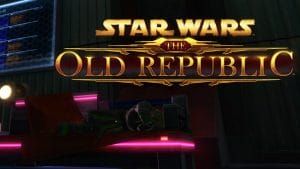 Mek-Sha Decorations Mission Guide
Mek-Sha Decorations Mission Guide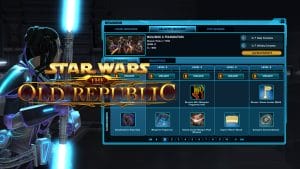 Galactic Seasons Guide and Rewards – Season 6, Building a Foundation!
Galactic Seasons Guide and Rewards – Season 6, Building a Foundation!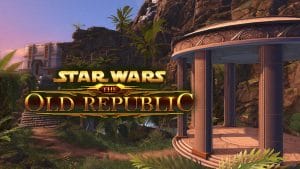 Copero Stronghold Guide
Copero Stronghold Guide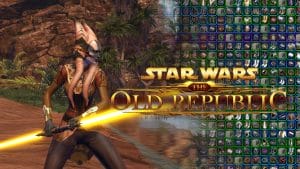 Fitted Armor and Ancient Armaments
Fitted Armor and Ancient Armaments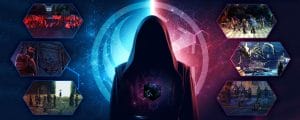
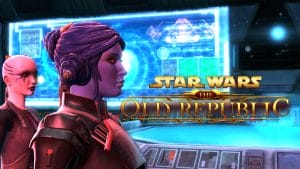
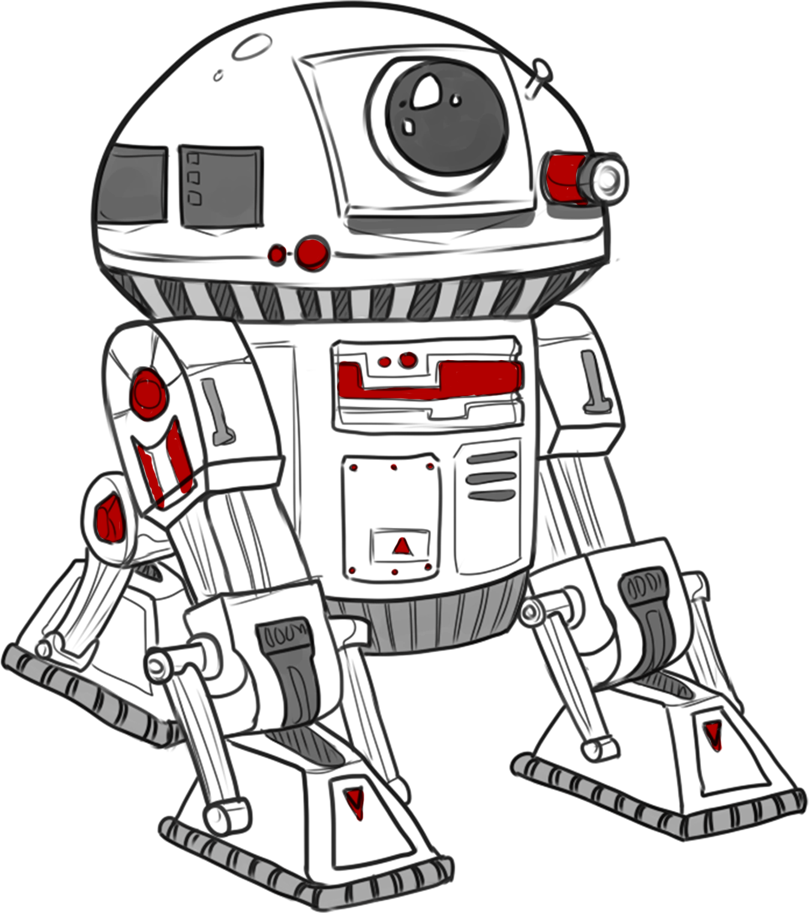
 Twitter @swtorista
Twitter @swtorista Reddit /u/swtorista
Reddit /u/swtorista Discord Swtorista#0153
Discord Swtorista#0153 Email swtorista@gmail.com
Email swtorista@gmail.com Youtube Swtorista
Youtube Swtorista Twitch Swtorista
Twitch Swtorista Patreon
Patreon